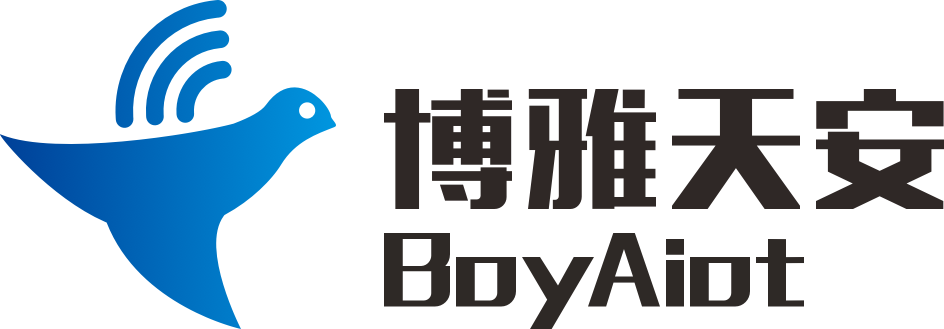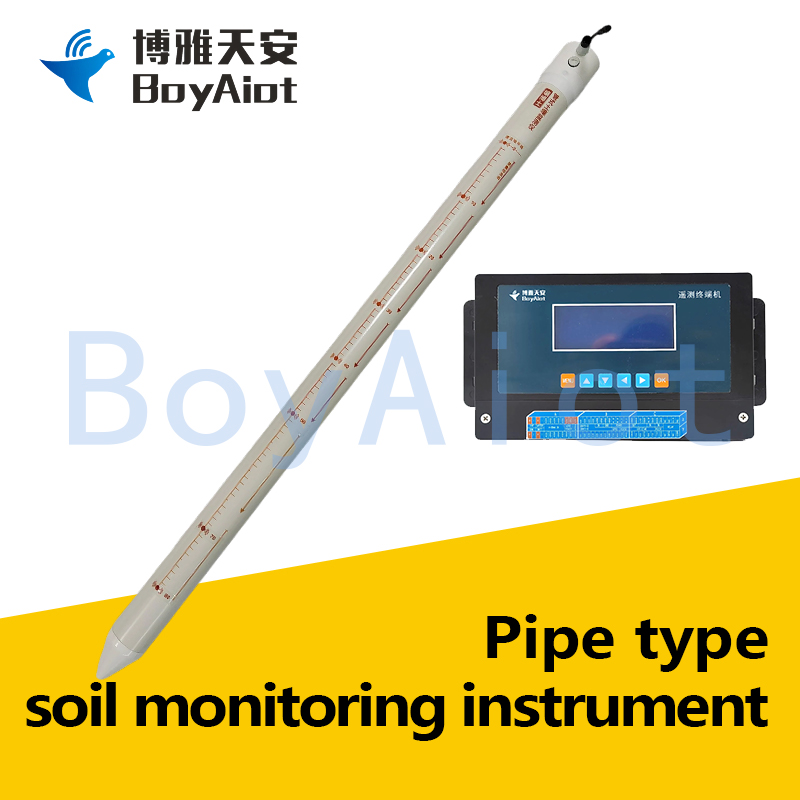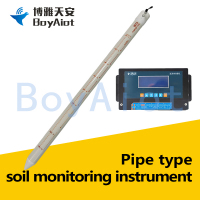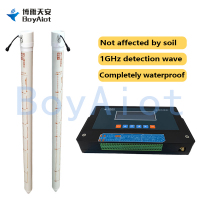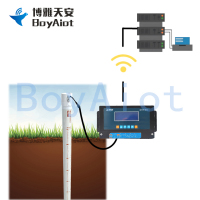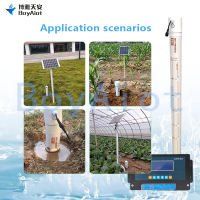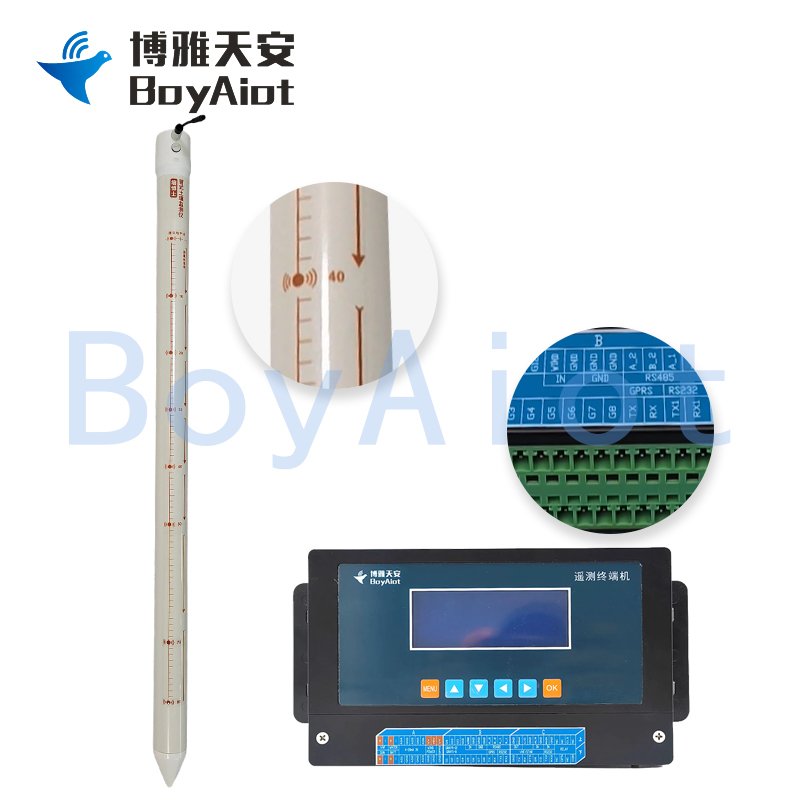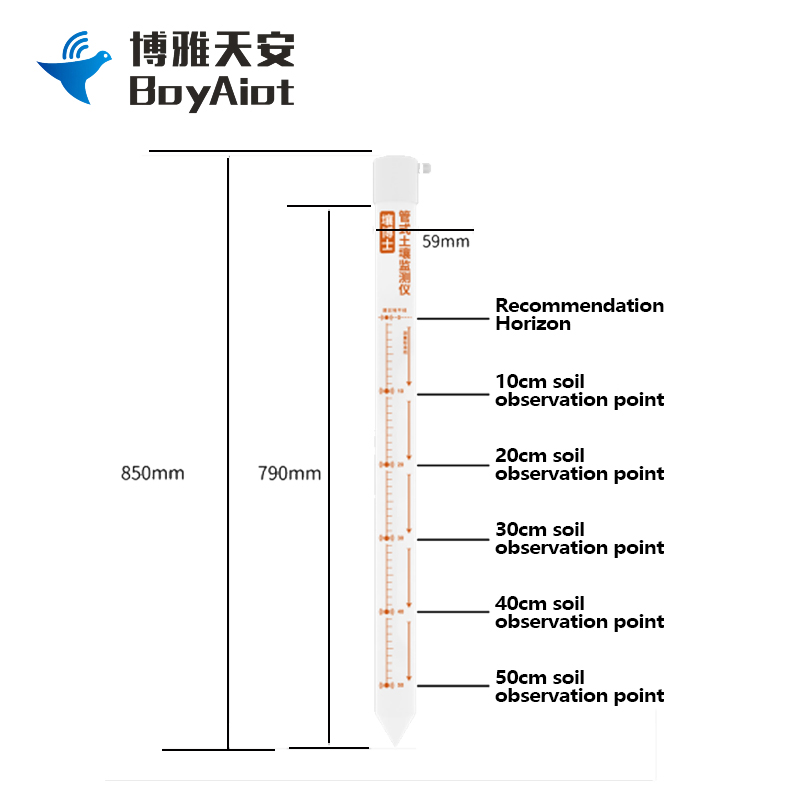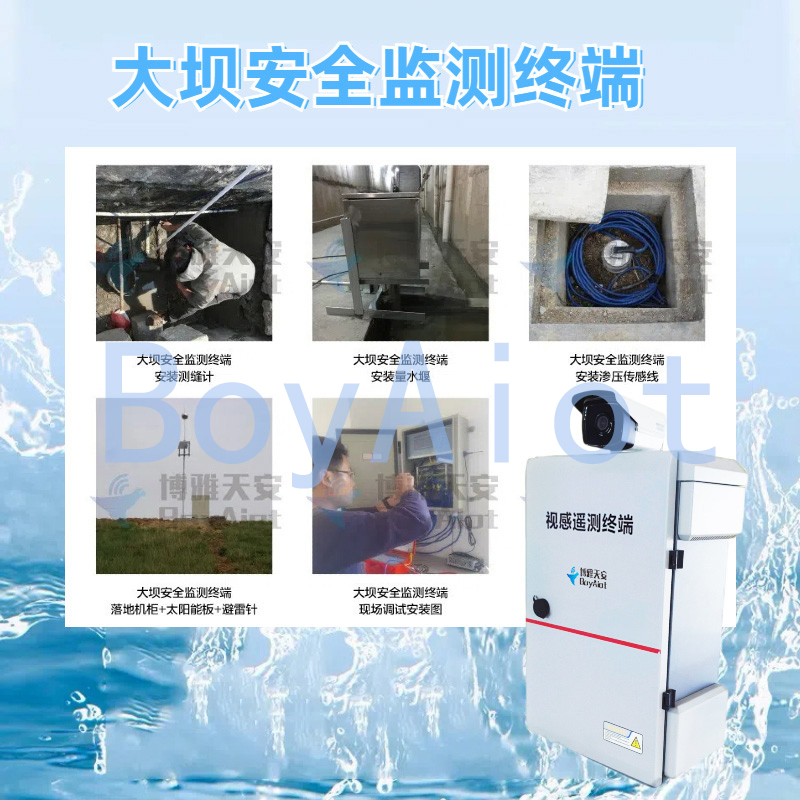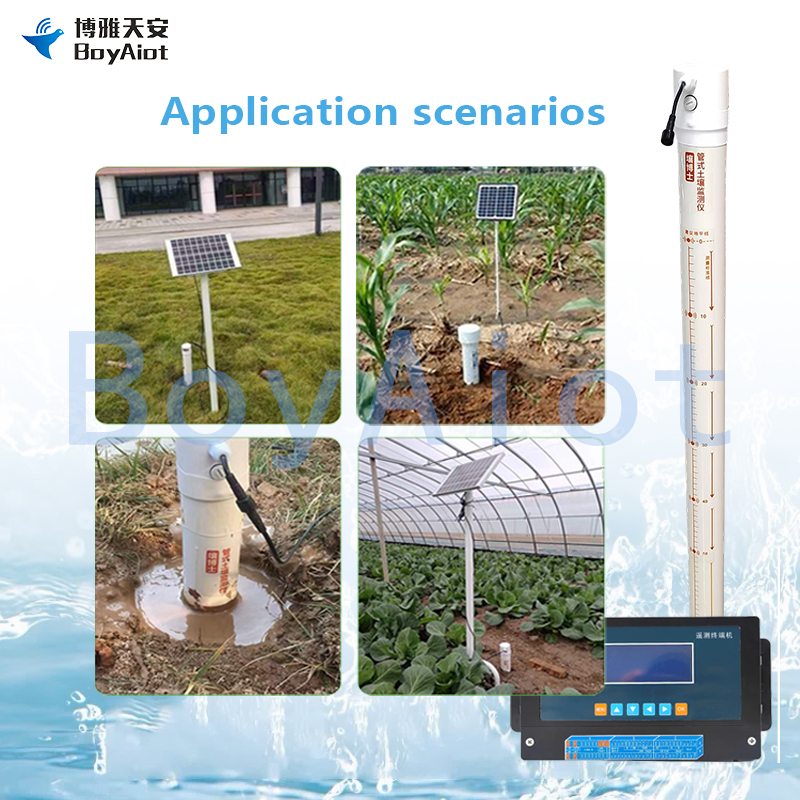Boy-5W5S Pipe type soil monitoring instrument
Product features:
1、1GHz High-frequency detection waves
2、Meter-level high-precision measurement (resolution 0.1mm)
3、Avoid the interference of electricity on the soil and the plants in the soil.
4、Monitor soil and equipment status in real time.
▋ Video Description
▋ Product Description
Soil moisture monitoring instrument is a sensor based on the principle of dielectric constant. This detector can dynamically observe the soil moisture content and temperature status at different levels. It can detect the temperature and humidity status of at least 3 layers of soil and up to 5 layers of soil. It is equipped with a tilt angle device to monitor the tilt angle of the soil to determine the soil and equipment status. There is also an advanced version of the tubular soil moisture monitoring device, which is made of sealed material and can be completely waterproof.
▋ Product Characteristics
The product shell is made of PVC plastic tube, which can penetrate high-frequency detection waves up to nearly 1GHz well and is not affected by salt ions in the soil. Agricultural activities such as fertilizers, pesticides, and irrigation do not affect the measurement results and provide good protection for the circuit. The product uses an inclinometer sensor with precise and stable angle measurement.
characteristic | description |
High-frequency detection waves | The internal emission of nearly 1GHz high-frequency detection wave, effectively perceive the soil environment, |
High-precision measurements | Meter-level high-precision measurement (resolution 0.1mm) |
Good waterproofing | The advanced version of the tubular soil condition monitor is potted and sealed, which can be completely waterproof |
Accurate data | Agricultural activities such as fertilizers, pesticides, and full irrigation will not affect the measurement results regardless of the salt ions in the soil fill |
Low environmental impact | The electrodes of the sensor are not in direct contact with the soil, so as to avoid the interference of electricity on the soil and the plants in the soil. |
The communication distance is long | The product adopts the standard ModBus-RTU485 communication mode, and the maximum communication distance is 2000 meters |
Real-time monitoring | Optionally, a built-in inclination sensor can monitor soil and equipment status in real time. |
▋ Product Parameter
working temperature | -40℃-80℃ | |||
measuring range | soil humidity | 0~100% | ||
soil temperature | -15℃~35℃ | |||
Soil conductivity | 0-20000μS/cm | |||
dip | -90°~90° | |||
certainty of measurement | soil humidity | ±5%(@50%,25℃) | ||
soil temperature | ±0.5℃(25℃) | |||
Soil conductivity | In the range of 0-10000μS/cm, ±3%FS; in the range of 10000-20000μS/cm, ±5%FS (Brown soil, 60%,25℃) | |||
Inclination (typical accuracy) | X, Y axle | Static precision ±0.1°, dynamic precision ±0.5° | ||
Z axle | The static precision is ±0.5°, and the dynamic integral error exists | |||
Temperature drift (tilt) | ±(0.5°~1°),(-40°C ~ +60°C ) | |||
Point spacing | 10cm | |||
power supply mode | 10-30V wide DC power supply | |||
The shell is made of material | PVC plastic pipe | |||
levels of protection | The part below the ground is IP68 | |||
output signal | RS485 (ModBus protocol) | |||
power dissipation | three layers | 0.7W | ||
Five levels | 0.96W | |||
response time | ≤60s | |||
▋ Product Size
▋ Installation Method
1、Preparation:
Equipment and tools: Soil moisture monitor, soil auger, water, bucket, gloves, etc.
Site selection: Choose a flat area that represents the crop growth conditions. Avoid low-lying areas prone to water accumulation.
2、Drilling:
Drill vertically with the soil auger at a slow speed to prevent the hole from tilting.
Collect the soil in a bucket and continue drilling until the hole depth matches the sensor installation position.
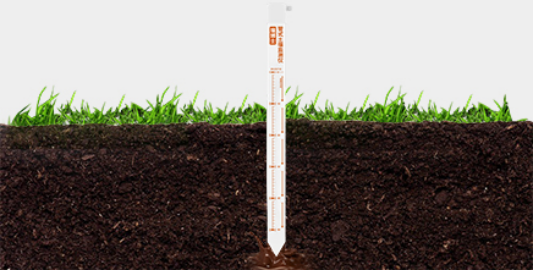 3、Making slurry:
3、Making slurry:
Remove impurities from the soil, crush it into fine particles, and mix it with water to form a thick slurry.
4、Grouting and installation:
Pour the slurry into the hole until it reaches halfway. Slowly insert the sensor while rotating and pressing it down until it is properly installed. Remove excess slurry around the sensor.
5、Completion:
Connect the power and 485 communication lines, power on the device, and wait for the slurry to return to a normal state before use.
▋ Application
This product is suitable for detecting soil moisture and drought information, or for real-time monitoring of meteorological, water and rain conditions, soil moisture, agricultural conditions, water conservancy engineering water storage and diversion, and other places.
(1) Inaccurate measurement data
Check the sensor status: Check if the sensor is damaged, corroded, or not. If the sensor ages or is damaged, it should be replaced with a new sensor in a timely manner.
Eliminate external interference: Try to place the instrument away from electromagnetic interference sources and avoid using it in environments with drastic temperature changes. If possible, shielding measures can be used to reduce electromagnetic interference.
(2) The instrument cannot be turned on
Check battery level: Replace the battery with a new one or charge the rechargeable battery to ensure that it has sufficient power.
Troubleshooting internal circuit faults: If none of the above methods can solve the problem, it may be due to an internal circuit malfunction. At this point, professional maintenance personnel should be contacted for repair.
(3) Abnormal data transmission
Check the transmission line: Check if the data cable is intact and if the interface is loose. If there is a problem, replace the data cable or re plug the interface to ensure a secure connection.
Check instrument settings: Verify whether the transmission frequency, protocol, and other settings of the instrument are consistent with the receiving device. If necessary, reset the instrument parameters to ensure normal data transmission.
